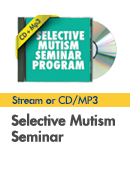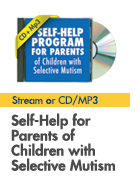After thirty eight years of clinical experience with thousands of social anxiety patients of all ages I can say, with the utmost of integrity, that one of the primary reasons the mental health community has remained helpless in its attempt to provide productive treatment for social anxiety is the confusion regarding avoidance and dependence. In clinical terms I am addressing DSM V 301.82 Avoidant Personality Disorder and DSMV 301.60 Dependent Personality Disorder.
For example, the following are common clinical profiles with whom I have worked.
Rob went to college for a week until his social anxiety got the best of him and he retreated home. At age 26 he worked sporadic jobs with no continuity, socialized occasionally with one friend, and spent most of his awake time playing computer games.
Jadine, age 20, like Rob, dropped out of art school after a short stint and retreated to her room where for two years she rarely communicated with her mom because of her selective mutism. She spent her days with various pursuits online. She had an online “boyfriend”. She had no friends with whom she socialized in person. She stayed up all night and slept for most of the day.
Mike at age 20 was school phobic since elementary school. He had no friends since age 7. He did not work. The only activities that were meaningful for him were video games and college football.
It will be productive to examine what these individuals have in common.
- Their behavior and personality was avoidant.
- They behavior and personality was over-dependent.
- They had adequate intellectual intelligence.
- They had poor emotional intelligence.
- They did not have initiative for healing or improved mental health.
- Their parents were substantially confused, frustrated, and overwhelmed about the situation.
A functional way of looking at these scenarios is that these individuals were addicted to avoidance! In order for avoidance to be sustained enabling must take place. “Enabling” means any behavior on the part of caregivers that inhibits the growth or potential of the dependent. These individual s were not only over-dependent on parents but also on the technology that dominated their lifestyles.
The foundation of clinical success with these three cases was based on teaching an empowering parenting strategy before the primary patient was integrated into treatment. Without this parenting strategy there would have been no potential for success because the patient would detach and avoid.
Detachment is the dynamic of disconnecting from thoughts and feelings. Detachment is the doorway to avoidance! All three patients were very skilled at detachment. Their detachment morphed into avoidance which evolved into social phobia. I have worked with countless individuals who have detached to the extent they live in an alternate and avoidant reality. They have no intention of changing! Concurrent with parental enabling a pathology of homeostasis is created.
I would highly advise the potential consumer of mental health services for the treatment of social anxiety to be wary of therapies that do not differentiate between the individual with and without initiative for healing. This refers to primarily cognitive behavioral therapy and traditional analytical methodologies. What these methodologies do not understand is that even if parent s are able to get the dependent into individual therapy, the patient has no incentive or motivation to give up primitive functioning. This is because that would require facing anxiety and getting out of one’s comfort zone! Their anxiety is painful to the point that avoidance can be a way of life.
The typical therapist response of “he’s over 18 I can’t see the parents” personifies impotence in treating avoidant and dependent personality which is an integral component of social anxiety.
As many parents have communicated to me “their child did not come with a manual”. I am in no way condemning confused parenting. I am simply saying that in order for clinical success to occur an empowering parenting methodology must be in place due to the extremely ingrained detachment and avoidance dynamic. Without this, the problem will accrue with time. Parents have substantial empowering potential when using the Berent Treatment Method for Social Anxiety.
Many parents who are challenged with socially anxious dependents had identified shyness in their children at an early age. The biggest mistake that is made is when substantial shyness is observed for a sustained length of time is to believe that the child will simply grow out of the problem. The more that shyness is in place the more potential for avoidant and dependent behavior and personality characteristics there is. The more that avoidance is at play the more potential there is for performance anxiety as there is a void in skills acquisition. It will be empowering for parents to invest in the belief that your most valuable asset is time; to empower or enable.








